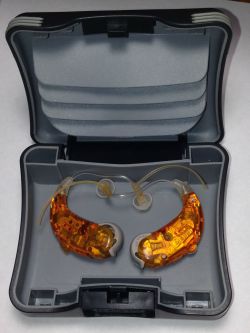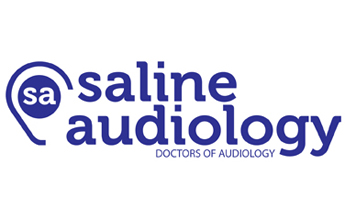New Year Hearing Health
Three steps for getting active with hearing health in the New Year
Contributed by Debbie Clason, staff writer for Healthy Hearing | Monday, January 18th, 2016
If getting fit in the New Year is one of your resolutions, we want to help you succeed — especially as it applies to your hearing health. Like most resolutions, you need to be emotionally invested in making a change and willing to do what it takes to achieve results.

for hearing aids.
Ask yourself this question: How much do I value my sense of hearing? If you’re like most hearing people, you’ll probably say you appreciate the ability to hear and want to continue hearing doing it as well as you can for as long as you can. If you agree, we have good news. Because we know you’re all very busy, we’ve identified three easy steps to be proactive with hearing health this year — for you as well as for those you love. Each step takes a relatively short amount of time; however, each is critically important in your efforts to get “hearing fit” this year.
Step #1: Make the appointment
Call your hearing healthcare professional and schedule an appointment.
This couldn’t be any easier — unless someone does it for you. If you already have a hearing health professional, give them a call and schedule an appointment. The entire process will most likely take less than 60 seconds. Now all you have to do is follow through. Get in the car. Drive to the appointment. Listen to what the hearing healthcare professional recommends. Discuss your options and involve your family in making the decision that’s right for you.
Find a hearing healthcare professional and call for an appointment
Healthy Hearing has made it incredibly convenient for anyone to find a trusted hearing healthcare professional in their community with our online hearing center directory. Take a minute (or two, if you live in a big city) to enter your zip code and find hearing centers within driving distance. Read the verified patient reviews from the ones you’re interested in, then make the phone call and schedule an appointment.
Although this might sound simplistic, it’s the most important step on the list. Why? Experts estimate as many as 48 million Americans have some degree of hearing loss. While you might not be surprised to learn that your chances of developing hearing loss increase as you age, it’s alarming to learn that only 20 percent of people who could benefit from treatment actually seek help.
If you’d rather use a hearing healthcare professional recommended to you by your physician, family member or close friend, that’s okay, too. The main goal is to find someone you trust with your hearing health and establish a relationship.
Step #2: Address your hearing loss
Have your hearing tested
Maybe you haven’t been hearing as well as you used to or someone you love has urged you to get your hearing checked. Whatever the reason, if you’re 50 years of age or older, chances are it’s time to see a hearing healthcare professional anyway. The good news? Most hearing evaluations take an hour or less. If you aren’t diagnosed with hearing loss, at least you’ll have a baseline of your hearing health for the next time you have an evaluation. If you are diagnosed with hearing loss, discuss yourtreatment options with the hearing healthcare professional and follow through.
Trial a pair of hearing aids
Here’s another disturbing fact. According to the American Speech-Language-Hearing Association(ASHA), “the average hearing aid user waits more than 10 years after their initial diagnosis to be fit with their first set of hearing aids.” Waiting to treat hearing loss can cause a boatload of other medical issues, including cognitive decline, social isolation, depression and anxiety.
If you’re diagnosed with sensorineural hearing loss and the hearing healthcare professional believes you would benefit from wearing hearing aids, ask about a trial period. Many hearing centers offer programs so their patients can experience what life with hearing aids is really like. Make sure you understand all of the details about the program before you leave the hearing center with the devices and follow all of the guidelines carefully. More than likely, you’ll want to keep the hearing devices once you hear what you’ve been missing; however, you don’t want to be penalized should you decide to return them.
Step #3: Protect the hearing you have left
Turn down the volume
Since noise-induced hearing loss (NIHL) is one of the most common — and most preventable — forms of hearing loss, keeping the volume low on televisions, radios and personal electronic devices is a simple way to protect your hearing. Here’s a good tip for setting the volume on any device: turn it down low enough you can’t hear it, then turn it up slowly until you don’t have to strain to hear. Limiting the amount of time you listen to devices through headphones and earbuds is another good way to prevent NIHL.
Purchase hearing protection
Investing in hearing protection may be the smartest, least expensive thing you do this year. This is as simple as purchasing a container of foam ear plugs the next time you’re at the drugstore and keeping them in the car console for the next time you find yourself in a noisy environment. If you regularly participate in other activities that are noisy, such as hunting, woodworking or motorcycle riding, invest in a good pair of ear muffs. And don’t forget the little ones. Although their hearing may be normal now, demonstrating good hearing health habits is a gift that will keep all of you hearing your best for years to come.
© Copyright 2016. All Rights Reserved. HealthyHearing.com does not provide medical advice, diagnosis or treatment.
